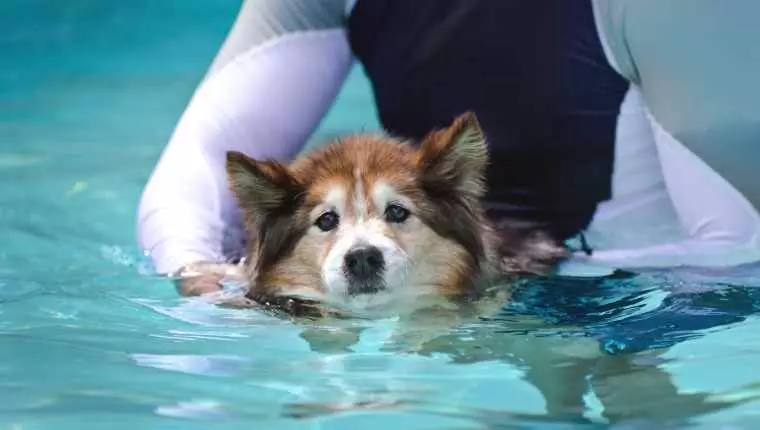Hydrotherapy, often hailed as the water cure, has emerged as an innovative approach to rehabilitating dogs suffering from various physical ailments. Rooted in the ancient Greek concept of “water healing,” this therapy employs the natural properties of water to soothe pain and accelerate recovery. But beyond its historical lineage lies a modern remedy that is capturing the attention of pet owners and veterinarians alike. The question that arises is: how does hydrotherapy truly benefit our canine companions?
At its core, hydrotherapy utilizes water’s unique physical characteristics—buoyancy, resistance, viscosity, and hydrostatic pressure—to promote healing. For dogs grappling with issues such as torn ACLs, hip dysplasia, or arthritis, the therapeutic properties of water create an ideal environment for rehabilitation. For instance, while performing exercises in water, dogs experience reduced strain on their joints, allowing them to regain mobility more comfortably and effectively than traditional methods on land.
The Mechanics Behind Hydrotherapy
The magic of hydrotherapy lies in its ability to provide weightless physical activity. When submerged, a dog’s body is supported by the water, significantly alleviating the pressure that gravity normally exerts on its joints and muscles. This not only reduces pain but also encourages movement, stimulating the muscles and joints in a controlled manner. Through diversion of water flow, therapists can tailor resistance levels according to individual needs, thereby creating a customizable fitness regimen aimed at recovery.
Several types of hydrotherapy techniques are currently in use, each designed for specific therapeutic outcomes. One of the most renowned methods is the underwater treadmill, where a dog walks on a moving treadmill while partially submerged. This innovative approach allows for low-impact exercise, enhancing muscle strength without the common risk of injury associated with high-intensity workouts.
Types of Hydrotherapy for Canines
While the underwater treadmill stands out as a prominent option, other forms of hydrotherapy, such as whirlpool therapy, should not be overlooked. This method involves immersing a dog in a temperature-controlled pool equipped with powerful jets that massage the affected areas. The warm water helps to alleviate stiffness in muscles and reduce inflammation, making it especially beneficial during the post-operative recovery phase.
Another technique, pool therapy, is focused on enhancing the range of motion in specific joints through resistance exercises. This allows dogs dealing with chronic conditions like arthritis to maintain or regain their mobility in a supportive setting. The depth and design of the pool can be tailored to meet the specific needs of the dog, maximizing effectiveness while minimizing the risk of overstressing any injured areas.
The Broad Spectrum of Benefits
Beyond mere pain relief, hydrotherapy offers a holistic array of advantages that contribute to a dog’s overall well-being. One of the most critical benefits is its capacity to accelerate healing periods. With improved blood circulation and enhanced tissue repair facilitated by water resistance, dogs can recover from injuries quicker than they typically would. Furthermore, hydrotherapy promotes cardiovascular fitness, which is crucial for maintaining a healthy weight and overall vitality in our pets.
Hydrotherapy also addresses various secondary issues, such as muscle spasms and stiffness that can arise from immobility or chronic pain. Increased mobility expands a dog’s ability to engage in regular activities, bolstering their mental well-being in addition to physical health. The emotional aspect of improving a dog’s quality of life should not be underestimated; an active and pain-free dog is a happier dog, contributing to a fortified bond between pet and owner.
Professional Guidance: The Key to Safe Hydrotherapy
While the benefits of hydrotherapy are clear and compelling, it is paramount that such treatments are administered by certified professionals equipped with specialized knowledge. A veterinarian’s initial assessment is crucial in determining if hydrotherapy is appropriate for a particular condition, ensuring that dogs receive tailored treatment that prioritizes their unique medical histories and needs.
Costs associated with hydrotherapy can vary, reflecting the complexity of the dog’s condition and the specific treatment required. Pet owners should be prepared for expenses ranging from $40 to $60 for a typical 30-minute session, making it crucial to weigh the long-term benefits against financial considerations.
Hydrotherapy stands as a groundbreaking method for alleviating suffering in our beloved pets. Its multifaceted approach to rehabilitation not only fosters physical recovery but also enhances the overall quality of life for dogs facing hardships. Whether considering hydrotherapy for injury or chronic pain, it’s essential to approach it as part of a broader strategy to promote your dog’s health and happiness. As a responsible pet owner, exploring the potential of this transformative therapy could lead to more joyful days for your four-legged friend.

